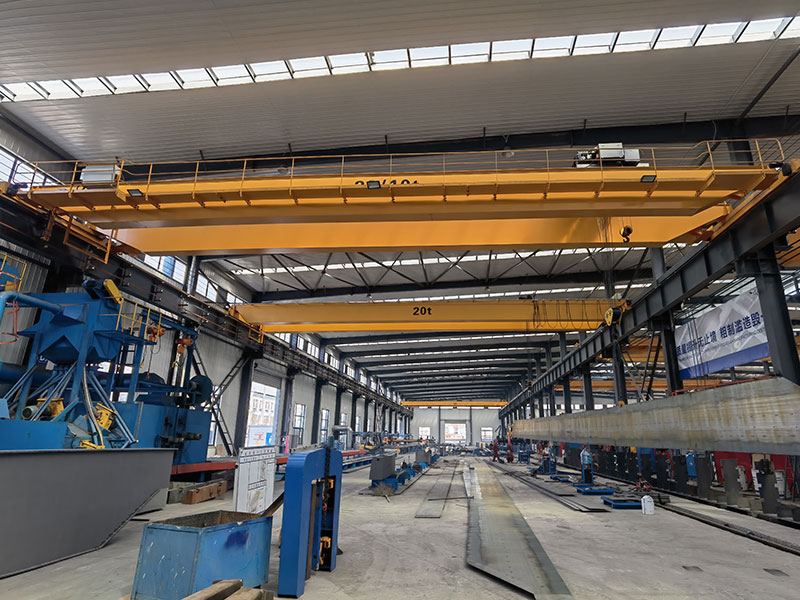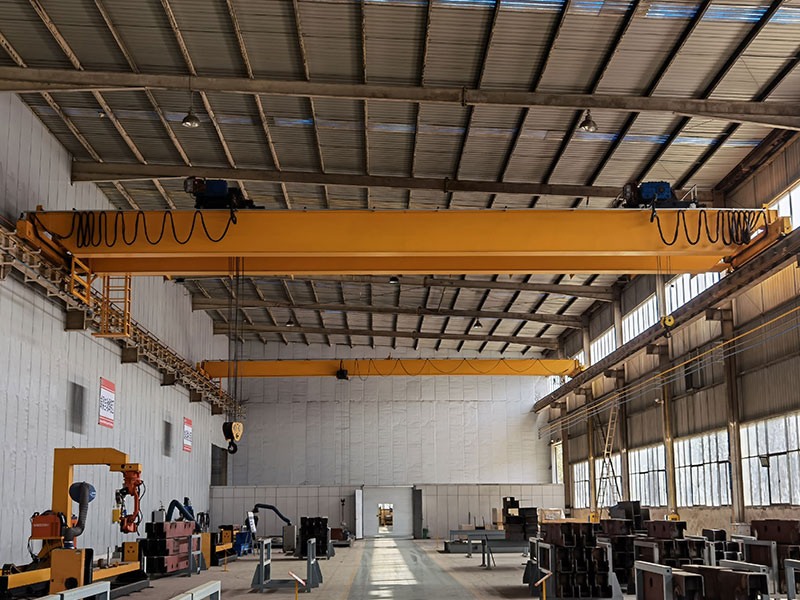Double girder overhead cranes are among the most versatile and heavy-duty lifting systems available for industrial applications. They are widely used in manufacturing plants, warehouses, and heavy industries due to their ability to lift and transport heavy loads efficiently. However, when it comes to purchasing a double girder overhead crane, many factors influence the overall price, one of the most significant being crane configuration and customization options. In this article, we will delve into the key factors that impact the double girder overhead crane price, including various configurations, customization options, and how these choices align with specific operational needs.

1. Understanding Double Girder Overhead Cranes
Before we explore how crane configuration and customization affect the price, it’s essential to understand what makes double girder overhead cranes different from other types.
A double girder overhead crane consists of two parallel beams (girders) that run along the length of the crane runway. These beams support the hoist, which moves along the span of the crane. Double girder cranes are ideal for handling heavy loads, as their design allows for greater lifting capacity compared to single girder cranes. Additionally, the configuration provides better headroom, enabling higher lifts, and facilitates smoother operation at high speeds.
The main components of a double girder overhead crane include:
- Girders: The primary horizontal support beams of the crane.
- Hoist Unit: The lifting mechanism that is mounted on the trolley.
- Trolley: The component that carries the hoist across the span of the crane.
- End Trucks: These are the wheels or supports that move the crane along the runway.
- Control System: The mechanism for operating the crane, which may be manual, pendant, or remote-controlled.
Now that we have a basic understanding of double girder overhead cranes, let’s take a closer look at how crane configuration and customization influence their price.
2. Crane Configuration: The Backbone of the Crane’s Performance
The configuration of a double girder overhead crane directly affects its load capacity, span, lifting height, and operational speed. Here are the key factors related to configuration that impact price of overhead crane:

a. Load Capacity
The load capacity of a crane refers to the maximum weight the crane can safely lift. Double girder overhead cranes are known for their high lifting capacity, with some models able to handle loads up to 500 tons or more. As the load capacity increases, the materials used in the crane’s construction must be stronger, which drives up the price. For instance, a 10-ton crane will generally be much more affordable than a 100 ton overhead crane, primarily because of the structural enhancements required to ensure safe lifting of such heavy loads.
b. Span
The span of the crane refers to the distance between the two girders, and it plays a significant role in the crane’s cost. A wider span allows the crane to cover a larger area, but it also requires additional materials and engineering expertise to maintain structural integrity. As the span increases, the cost of materials (such as the girders and runway rails) also increases, leading to a higher price tag. Customization of the crane’s span according to specific needs, such as a particular workspace or production line configuration, further affects the overall cost.
c. Lifting Height
The lifting height of a crane is another crucial factor that influences the price. Double girder cranes offer the ability to lift loads higher than single girder cranes, but the higher the lift, the more complex the design becomes. This includes considerations for the crane’s hoist, which may need to be customized to allow for taller lifts. Additionally, taller cranes require stronger components to maintain structural integrity, further driving up the price.
d. Speed of Operation
Crane speed is an essential performance factor in many industrial environments. Double girder cranes can be customized with different hoist speeds and trolley speeds, depending on the application. A crane designed to operate at higher speeds, such as in a manufacturing facility where quick material handling is crucial, will require specialized motors and drive systems, which can significantly increase the price. The speed of the crane’s movements, including the hoisting, trolley, and traveling speeds, can be adjusted based on the workload and operational efficiency requirements.
e. Duty Class
The duty class of a crane defines its expected level of usage, including factors like the number of cycles per hour and the intensity of the loads being lifted. Cranes that are designed for heavy-duty applications, such as steel mills or shipyards, typically require more durable materials and advanced systems, raising their cost. On the other hand, cranes used in lighter industrial operations will be built with lower-duty materials and simpler designs, resulting in a more affordable price.
3. Customization: Tailoring the Crane to Specific Needs
While the base configuration of a double girder overhead crane determines the general price range, customization can add significant costs based on the complexity of the requirements. Customization typically involves modifications to the crane’s design, components, and operational features to ensure it meets the specific needs of the customer.
a. Control System Customization
One of the most significant customizations is the crane’s control system. A basic crane may come with a manual control system, while more advanced models feature electric pendant controls, wireless remote controls, or even sophisticated automation systems for fully automated operations. Each of these control options comes with its own price tag, with remote control systems and automation driving up the price significantly due to the integration of advanced technology and additional hardware.
b. Special Materials and Coatings
For cranes operating in harsh environments—such as corrosive or extreme temperature conditions—special materials and coatings are required to enhance durability and ensure longevity. Stainless steel or specialized corrosion-resistant coatings can significantly increase the price of the crane. Similarly, cranes designed for high-temperature environments may require heat-resistant components, which adds to the EOT crane cost.
c. Hoist and Trolley Customization
The hoist and trolley systems can also be customized based on the specific requirements of the lifting process. For example, in some cases, a crane may require an explosion-proof hoist for hazardous environments, or a high-speed hoist for rapid material handling. These customizations ensure that the crane performs optimally in the designated application, but they come at a premium price.
d. Additional Safety Features
Safety is a paramount concern in crane design. Customized safety features such as anti-collision systems, load limiters, sway prevention mechanisms, and emergency stop systems can all be added to ensure the safe operation of the crane in demanding environments. While these features increase the initial cost of the crane, they are often necessary to comply with safety standards and reduce the risk of accidents.
e. Environment-Specific Modifications
Certain industrial applications require cranes to be tailored to unique environmental conditions, such as extreme weather or seismic activity. For example, cranes used in earthquake-prone areas may need to be reinforced to withstand seismic forces. Similarly, cranes working in cold storage facilities may require modifications to prevent freezing of mechanical parts. These specific environmental modifications can increase the overall cost of the crane.
4. Conclusion
The price of a double girder overhead crane is influenced by several key factors, including the crane’s configuration, load capacity, span, lifting height, and speed, as well as the level of customization required. The more specialized the crane’s configuration and the more custom features are added, the higher the overall cost will be. While the base price of a standard double girder overhead crane may be relatively straightforward, customization options offer businesses the opportunity to optimize the crane for their unique applications and operational needs.
Ultimately, investing in a double girder overhead crane should be seen as a long-term commitment to improving efficiency and safety in industrial operations. By carefully considering the configuration and customization options, businesses can ensure they select a crane that not only meets their immediate requirements but also provides value for years to come. Whether for handling heavy loads, optimizing operational speed, or ensuring safety in specialized environments, the right crane configuration and customization can significantly enhance productivity while maximizing the return on investment.